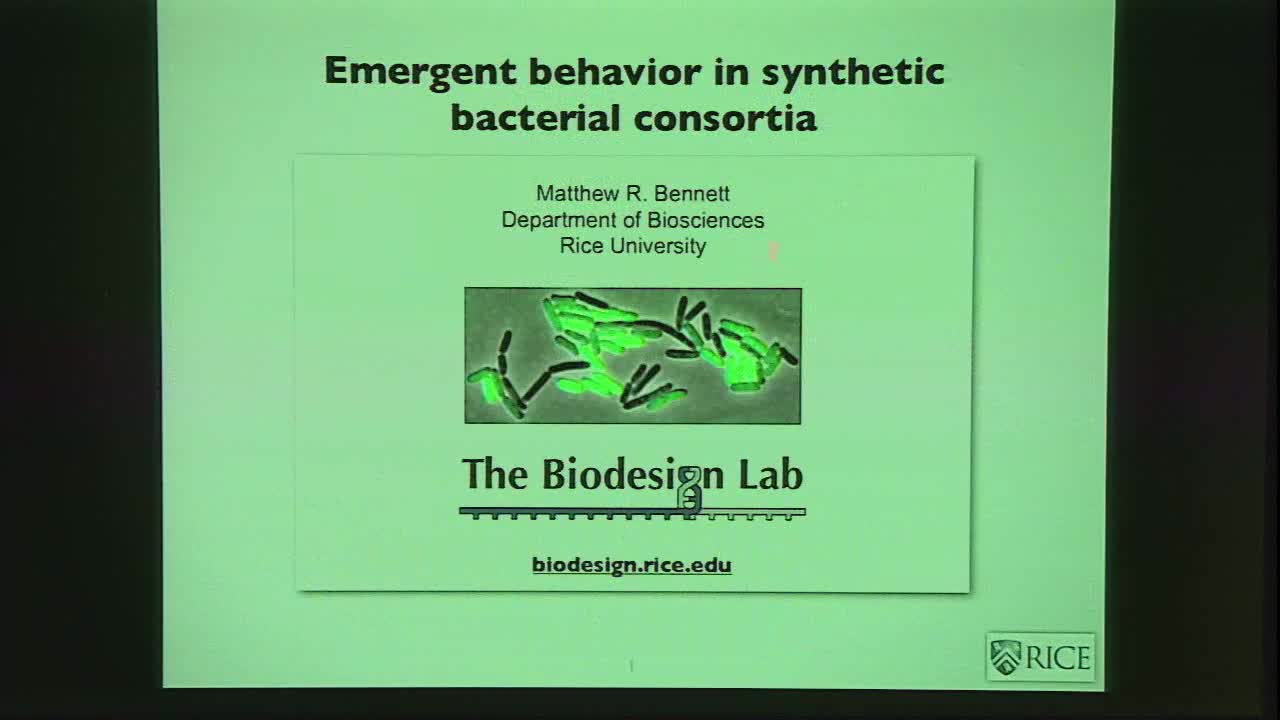Regulatory Networks in Synthetic Microbial Consortia
Presenter
November 16, 2015
Keywords:
- synthetic biology, gene networks, dynamical systems
MSC:
- 37N25
Abstract
Synthetic biology aims to engineer biological systems for practical purposes through the manipulation of gene regulation and enzymatic processes within the host. The vast majority of synthetic gene circuits operate within a single cell or isogenic colony of bacteria. However, utilizing multiple strains or species of bacteria simultaneously could greatly expand the possibilities of synthetic biology. These systems, called synthetic microbial consortia, more closely resemble the naturally heterogeneous environments of bacteria, such as gut microbiomes or biofilms. Here, I will describe our recent efforts to design, construct, and analyze multi-scale regulatory structures in synthetic microbial consortia. This work includes: 1) creating novel transcription factors and promoters that allow cells to sense and respond to complex environmental conditions; 2) engineering multiple intercellular signaling pathways to create population-level regulatory pathways; and 3) developing mathematical techniques that accurately model and predict the dynamics of gene regulation in competing bacterial strains. Using these techniques, we have been able to engineer novel synthetic microbial consortia that exhibit complex emergent behaviors, such as oscillations and global bistability. For example, in one system we used two different bacterial quorum sensing systems to construct an “activator” strain and a “repressor” strain that respectively up- and down-regulate gene expression in both strains. When co-cultured in a microfluidic device, the two strains form coupled positive and negative feedback loops at the population-level. The interacting strains exhibit robust, synchronized oscillations that are absent if either strain is cultured in isolation.
